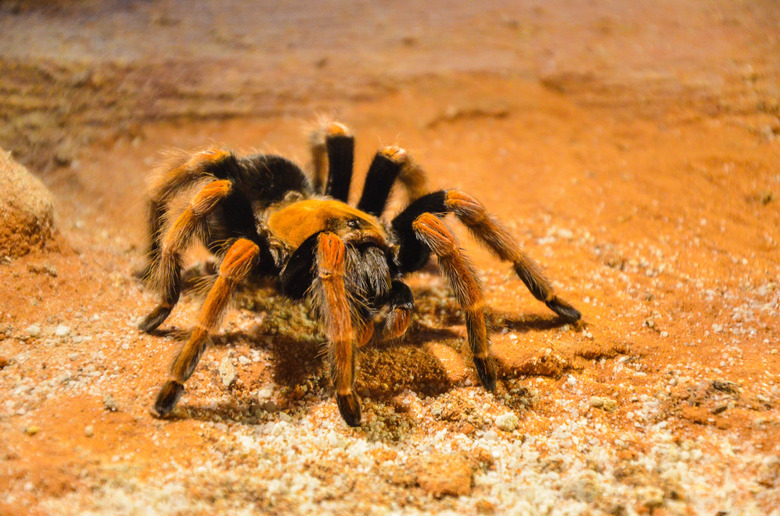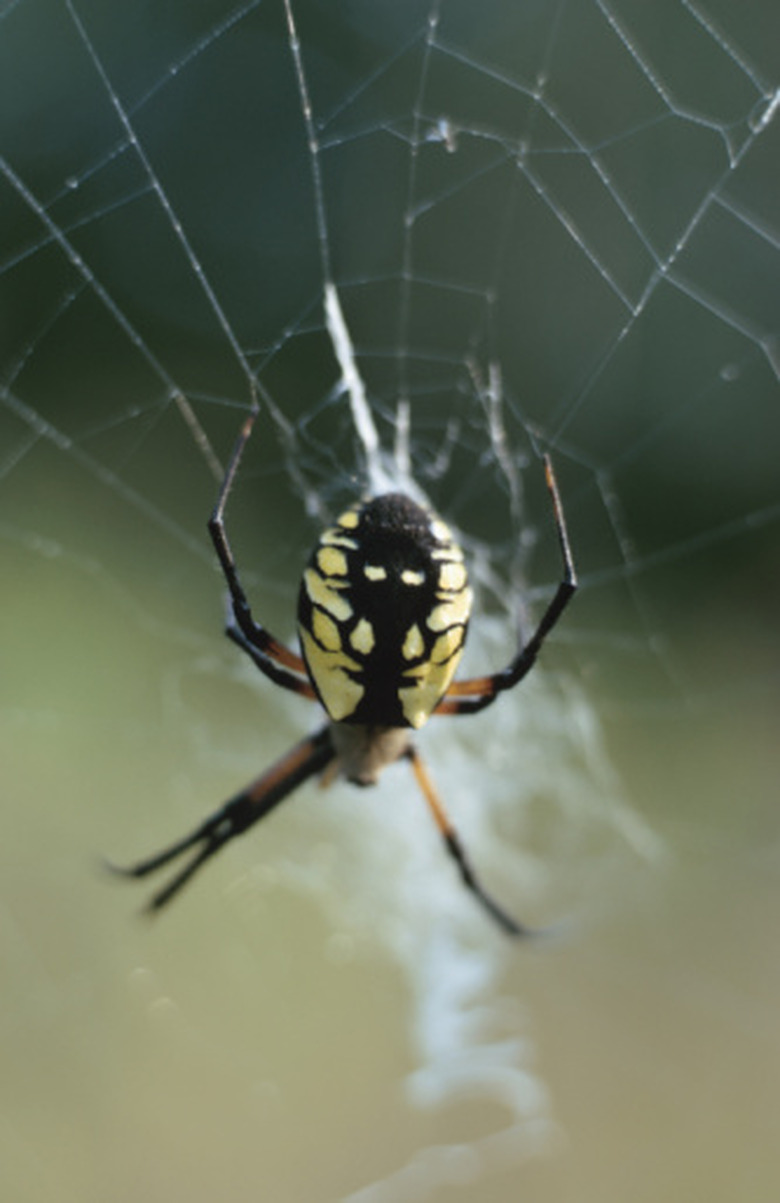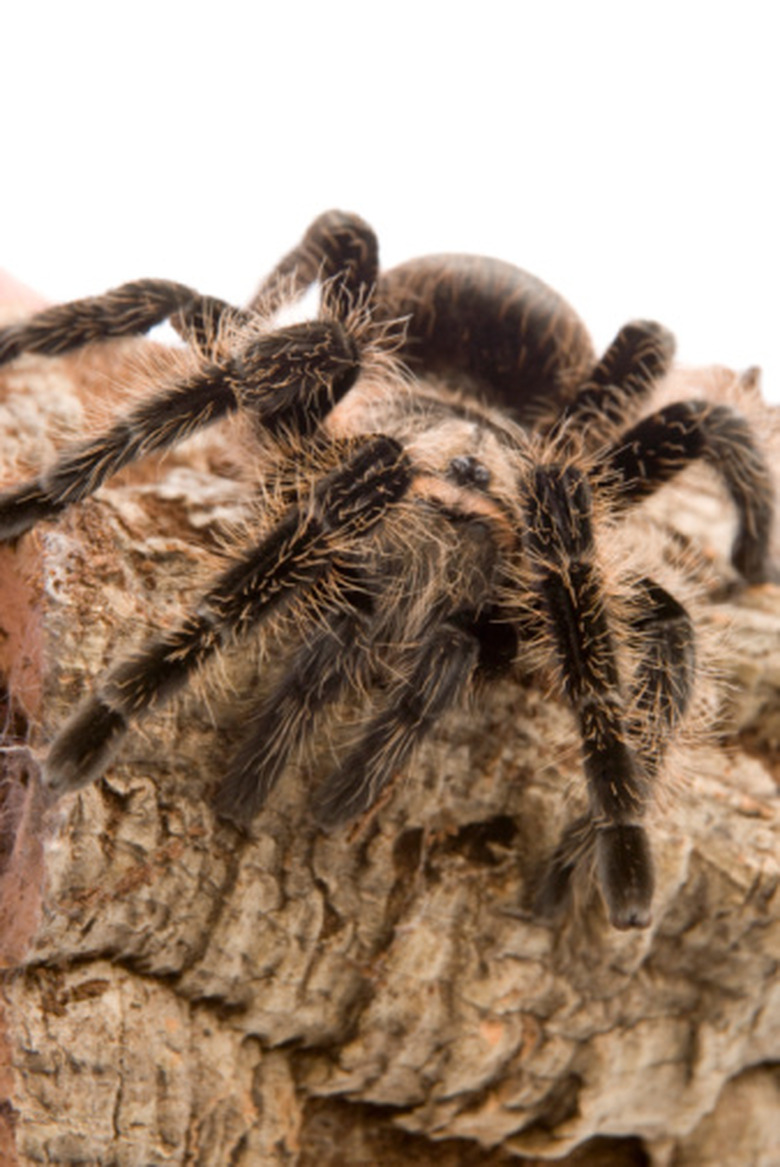Common Big Spiders
Depending on the region of the United States you live in, there may be one or more common types of "big" spiders. These spiders may live indoors or outdoors, depending on the region, climate and time of year. Big spiders typically have a body more than 1/2-inch long, and the leg span may be greater. Most spiders are sexually dimorphic in size, with females being considerably larger than males.
Garden Spiders and Orb Weavers
Garden Spiders and Orb Weavers
Orb weavers spin the type of spider web often depicted in photographs and drawings. The family includes the garden and barn spiders, along with argiopes. Barn spiders and garden spiders closely resemble each other and have big, hairy bodies reaching up to 7/8 inches long. Many spin new webs daily.
Argiopes and the golden silk spider are often the largest garden spiders. The black and yellow argiope, growing up to 1 1/8 inches long, spins a large, vertical, spiraling web among tall plants. The male often builds his web connected to an outlying portion of the female's web. The female golden silk spider, sometimes called a banana spider, giant wood spider or calico spider, is sometimes confused with the black and yellow argiope female. The golden silk spider, however, can grow up to 3 inches long.
Tarantulas
Tarantulas
North American tarantula species are common in the West and Southwest. This family of spiders grows to at least 1 3/8 inches long and can have a leg diameter of up to 6 inches. Unlike their South American cousins, venom from North American tarantulas is rarely more dangerous to a human than the sting of a wasp. They are shy spiders, often trying to scurry away from human contact. More important than their bite in some cases is the hair on their body. When disturbed, the tarantula may use its back legs to fling these hairs at its captor or enemy. The hairs can irritate the eyes, skin and mucous membranes.
Wolf Spiders
Wolf Spiders
Wolf spiders are common throughout North America. Most species are somewhat hairy, and most are black, gray or brown, with or without stripes or other markings. Some wolf spiders are very small, although the commonly encountered species range from 3/8 inches to almost 1 inch long. Wolf spiders do not spin webs to catch their prey; they are active hunters. Many people are frightened at the sight of these spiders because of their size and speed. Sometimes at night, you may catch a glimpse of a wolf spider's eyes because they reflect light like many mammals. You may also be lucky enough to catch a glimpse of a female with her young; she will carry around the egg sac and the spiderlings until they are old enough to fend for themselves.
Other Large Spiders
Other Large Spiders
Nursery web spiders are named for their maternal behaviors of carrying the egg sac — even while running over open water — and sometimes building a nursery web out of silk for the spiderlings. Most are found near water, although they also inhabit woodlands, meadows, prairies, even houses.
The giant house spider can grow large enough that the leg span could stretch across an adult human's palm. They are common in the Northwest.
References
- "National Audubon Society Field Guide to North American Insects and Spiders"; Milne and Milne; 1980
- Texas A&M University System; Beneficials in the Garden: Banana Spider/Golden Silk Spider; Candice Hawkinson
- University of Kentucky; Wolf Spiders; Blake Newton, Department of Entomology
- University of Kentucky; Nursery Web and Fishing Spiders; Blake Newton, Department of Entomology
- Portland State University; Spiders Commonly Found in Houses; Susan Masta
Cite This Article
MLA
Kelly, Jasey. "Common Big Spiders" sciencing.com, https://www.sciencing.com/common-big-spiders-8206972/. 22 November 2019.
APA
Kelly, Jasey. (2019, November 22). Common Big Spiders. sciencing.com. Retrieved from https://www.sciencing.com/common-big-spiders-8206972/
Chicago
Kelly, Jasey. Common Big Spiders last modified March 24, 2022. https://www.sciencing.com/common-big-spiders-8206972/


